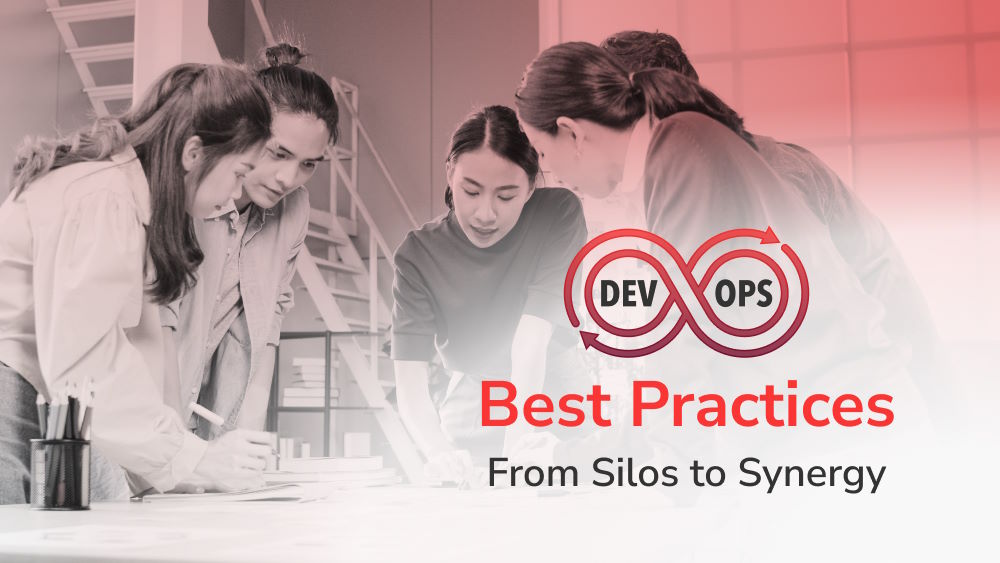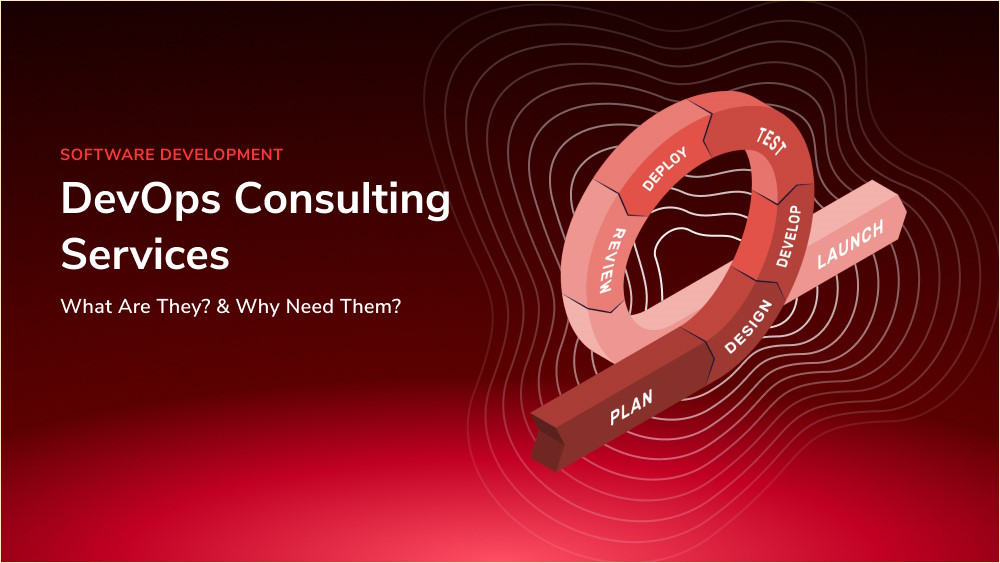From Silos to Synergy: DevOps Best Practices for Building High-Performing Teams

Content Map
More chaptersBy DevOps definition, it is a paradigm shift in the manner in that development (Dev) and operations (Ops) teams cooperate throughout the software development lifecycle with an emphasis on collaboration, communication, and integration. Initiated from the Agile software development movement, DevOps emerged in the tech industry as a response to the increasing demand for faster, more reliable, and continuous delivery of software products. It is entirely opposite to the traditional approaches where teams are segregated and operate in silos. The DevOps approach has been proven to create positive impacts on business agility and performance, as well as the overall quality of output, as 99% of respondents acknowledged this in the DevOps trends survey in 2020 undertaken by Atlassian.
DevOps transformation offers a package of advantages yet requires a mindful approach and a focus on understanding the right set of best practices for ensuring high-performance teams, which will be outlined in this article.
Benefits of Adopting DevOps Practices

Since its initial conception between 2007 and 2008, DevOps has been forged for a long duration before growing into a full-fledged methodology – often thought of as an evolution of Agile project management practices – and coming to prominence as current. Today, DevOps strategy has become a success factor for many businesses to reach new heights in their efficiency and performance.
In 2021, 83% of decision-makers in the IT industry were reported to adopt DevOps practices to access higher business value. The DevOps market jumped from $2.9 billion to $8.88 billion in the following year. At an astonishing rate, this value continued to increase and reach $10.84 billion in 2023, and it is expected to keep rising and will soon peak at $57.9 billion by 2030.
This is only a slice of how DevOps is being widely utilized in the environment of software development. Back to its core, DevOps helps adopters to drive many business benefits, typically mentioned:
Break Down the Silos Between Development and Operations Teams
Ordinarily, the traditional software development and deployment process involves different teams working in silos, with each group focused on their specific areas of responsibility and expertise. This way of working is no longer compatible when the Agile methodology comes in, and it reveals tangible restrictions in collaboration and communication, leading to the lack of understanding needed between a development team and an operations team.
Otherwise, the DevOps practice is brought in to strike down the barriers and bridge the gaps, fostering a collaborative environment and workflow between developers and IT operations engineers throughout the entire software development process. Obviously, they are able to function as one – a DevOps team, they are in a better position to share insights, strive for quality of output, coordinate activities, and engage in a shared vision geared toward one common goal. This encourages cross-functional teams and benefits the overall progress of the project, as it allows for a more iterative workflow with rapid release cycles and better visibility.
Accelerate Software Delivery Process
One of the DevOps benefits is that it enables establishing a rapid development cycle and a more reliable software delivery process. By setting up the DevOps culture and integrating modern automated tools, software teams can streamline various deployment steps throughout the development workflow, from build pipelines and unit testing processes to integration tests and production deployments. With the right DevOps tools, the engineering team can reduce manual work effort as well as eliminate potential human errors in the process, ensuring the software releases are deployed at quality.
Improve Software Quality
The seamless collaboration and communication of DevOps teams not only facilitate software development and deployment at an unprecedented pace but at a higher level of quality. This offered competitive edge proves to be a big aid in avoiding technical debt and software failures.
Although the old style of development, such as Waterfall, is proven to yield a complete product from start to finish, its lack of frequent feedback loops leads to restrictions in quality assurance, costly modifications, and rework at the end of the pipeline.
At this point, DevOps shows its advantage, as it enables continuous feedback and adaptation of products throughout the entire development lifecycle. Moreover, automated testing tools, such as Selenium and Appium, can further help the quality assurance teams to automatically assess and fix bugs found in the software’s performance before reaching the production environments.
This boosts the overall quality of output with fewer defective products delivered, which contributes to higher customer satisfaction, reduces the need for additional resources, and consequently lowers operational costs.
The Best DevOps Practices for a Victorious DevOps Transformation Endeavor

The DevOps lifecycle of transitioning from a siloed working model to a collaborative one comprises multiple phases. There are certain DevOps best practices that organizations should follow in order to achieve success:
Collaborative Culture
The first and foremost DevOps best practice to start the transformation journey is to set up an open and collaborative culture among the Agile teams – development, QA, and operations. There are some requisite conditions, such as collaboration, transparency, trust, empathy, and seamless communication, to make sure the DevOps adoption journey goes smoothly.
To bring those conditions to life, organizations need to create a high-trust culture and foster collaboration at all levels of their workforce. Using the right tools, such as Slack or Microsoft Teams, can facilitate communication among teams, allowing members to establish better understanding and enable faster problem resolution. Moreover, organizations should lay out DevOps principles for the whole team, along with training and certification programs to help them get up to speed on the basics of this methodology.
Last but not least, DevOps teams should schedule regular retrospectives to review the progress made and discuss topics for improvement frequently. This is aimed at ensuring everyone is on the same page in mindset and goals.
Agile Project Management Methodologies
DevOps offers agility not only in terms of development but also in project management, so organizations should apply Agile methodologies (such as Kanban and Scrum) to plan, track, and manage projects throughout the software development process.
Agile adoption helps teams keep project activities organized and make sure that all tasks are completed on schedule. Additionally, Agile helps to establish better feedback loops throughout the development process, allowing teams to get insights on performance and quickly adjust their plan when needed.
Continuous Integration & Continuous Delivery (CI/CD)
CI/CD pipelines are at the heart of DevOps practices, automating the process of building, testing, and deploying code changes. By integrating code regularly into the central repository and deploying it quickly, development and operation teams can identify and address issues more rapidly, ensuring code quality and reducing the time it takes to release new features and bug fixes. This also reduces the chances of conflicts and makes it easier for teams to work together on shared codebases.
Continuous Performance Monitoring & Optimization
DevOps lifecycle is extensive and iterative, and the teams should invest in performance management to maintain high-quality outputs by measuring the level of DevOps maturity. This helps to monitor the effects of different DevOps practices on their development processes as well as results and make sure they are not running into any issues.
DevOps teams leverage modern technologies (such as AI) and tools to measure and optimize their work to drive continuous improvement in the entire application lifecycle. There are various tools available, such as ELK Stack and InfluxDB, that allow development teams to monitor the performance of their applications in real time, giving visibility into the health of systems and insights into how users interact with them. This can help detect potential problems before they become critical issues and take the necessary actions to optimize performance.
Automation
Automation is one of the most important aspects of DevOps and helps to reduce manual work effort and repetitive tasks throughout the SDLC. Automated tools can be put in place to speed up deployment processes, automated tests, monitor applications in the cloud, and more. This allows DevOps teams to deliver software at the utmost velocity while maintaining high-quality standards.
Moreover, automation also helps the testing team detect issues promptly and accelerate the resolution processes, improving their overall efficiency. Some popular automation tools used in DevOps are Jenkins, Selenium, Chef, Puppet, Ansible, Kubernetes, Terraform, and more.
Configuration Management
Configuration management (CM) is a DevOps practice of maintaining an accurate and up-to-date description of the system’s configuration. It helps to track, manage, and automate changes made across all the environments in the organization’s infrastructure. This ensures that all systems are configured consistently, and errors can be quickly detected and fixed without impacting other parts of the application. In addition, CM helps to maintain compliance and security standards easily. When implementing a DevOps strategy in an organization, tools for configuration management like Puppet, Chef, and Ansible should be used to streamline the process.
These best practices enable organizations to achieve successful DevOps transformation in their application development lifecycle and harness the power of this methodology for improved velocity and quality across all stages of the SDLC. Implementing these measures can dramatically improve the reliability, performance, scale, and security of applications.
For starters, consulting with DevOps experts is more than necessary. Furthermore, having the right resources and tools at hand is essential to guarantee a smooth transition. With all of these elements in place, organizations can look forward to achieving DevOps success. If not, you may want to consider engaging with a DevOps consulting firm. They can help you build the right culture and processes for your team, as well as provide guidance on the best tools and practices. Or you can hire a dedicated team built to your exact requirements.
Come to Orient Software for your DevOps needs. We boast a hub of knowledgeable and experienced consultants and engineers who are ready to help you plan, design, and implement DevOps processes that will make it easier for you to deliver reliable software faster and with outstanding quality. Contact us today to learn more about how we can help.







